The Easiest Way To Improve Your Entire Program
Training Session
I’m also a big believer in involving my athletes in their training. If kids feel like they’re an active part of the training process (as opposed to simply being told what to do day in and day out), they’ll work harder.
With these two ideas in mind, I’ve stumbled across an extremely easy way to make every element of your program better starting at your next practice or training session…
You’ve probably used this before, but maybe not as a deliberate component of your overall program assessment.
What is it? The ‘On a scale from 1 – 10…’ question.
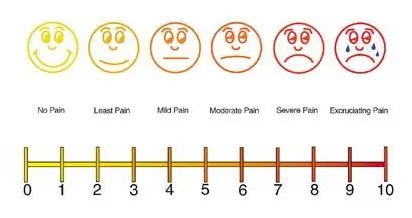
After every workout, practice or training session, I ask my athletes this simple question:
"On a scale from 1 to 10….
How did you like that new warm up?
How hard is the new lifting program?
How well did I explain and demonstrate the new speed drill we learned today?
How much do you like Workout A compared to Workout B you did last week?
You get the idea.
It sounds excessively simple, but if you don’t ask you’ll never know.
My kids know they’re allowed to ask questions and speak their minds without getting the stink eye.
So if I ask them a question, they know they can answer honestly without getting judged or punished. So they’re not going to tell me what they think I want to hear, they’re going to tell me the truth.
Kids (actually, people in general) really appreciate such an atmosphere because they’re probably not getting this type of treatment with their other coaches in their other sports. And that makes your program stand out in their minds.
Let’s say we’re doing a fairly high volume tempo workout that I want to be in the medium intensity range. So my goal for the workout, as I’m designing it, is for it to be a ‘5’ out of ’10’.
When it comes to volume, intensity and density it’s all a guessing game. How many 200s should you run in practice?
Truthfully, I don’t have an exact answer to that question. No coach on planet earth has a concrete answer to that question, at least none that I’ve met. And I’ve met quite a few. (If you do have THE answer, please let us all know! I’ll post your response and give you ALL the credit!)
Point is:
We’re always guessing. But we get closer to truth when we analyze our results over the course of each practice, season, etc.
In this example, if the workout is too hard, then it’s not the workout I intended. It may mean athletes have worked too hard and it could compromise the remaining elements of that day’s training session or the next day’s workout.
If I don’t ask for feedback from my athletes, I have no idea if the workout was effective. Was it too hard? Too easy? Just right? I can’t modify and evolve the program if I’m picking numbers out of a hat.
Of course, if you ask a 15 year old for detailed feedback about how effective they felt a workout was, their brains are going to shut down and they’ll stare at you blankly like a deer caught in headlights.
I’ve been around long enough not to get that technical!
But if you say:
"OK guys, I need some feedback on today’s workout. How hard was it on a scale from 1 to 10? ‘1’ being so easy you can’t even call it a workout, ‘5’ being "Eh, not hard, not easy” and ’10’ being the equivalent of getting shot in the stomach.”
I’ve given them parameters with which to base their number. If I don’t define what ‘1’, ‘5’ and ’10’ are, everyone will invent their own scale and the answers are essentially useless.
Then I go around to all the athletes in the group and ask them how hard they thought it was. If you know your athletes, you’ll know who the tough kids are and who the babies are, so you can scale their answers appropriately.
If you hear mostly 4s, 5s and 6s, you know it was a well designed workout and you can put that in your notes so the next time that type of workout needs to be run, you’ve got data to use to make it better.
But if you get all 2s, 3s and 4s, you know you did a poor job of designing the workout. The volume was too low. Or the intensity was too low. Or the rest was too long. Or all of those things. But now you have some practical data to use to modify some or all of those parameters for next time.
If you get all 6s, 7s and 8s, you know the workout was too hard. The volume was too high. Or the intensity was too high. Or the rest was too short. Or all of those things. But now you have some practical data to use to modify some or all of those parameters for next time.
Try it out with your athletes. If you’re confident enough in your training and you know you’ll actually use the information when you write down your notes from the days training session (you do that each day, don’t you?) then you’ll find this to be a fast, easy and effective way to improve your coaching and your program. Plus, it gets your athletes involved in their training and that makes the sport more fun for them. And that’s the whole point!
Use the ‘On a scale from 1 – 10…’ question with your athletes. It works and you’ll be surprised at how many holes you have in your training session planning and teaching that you never would have addressed if you didn’t let your athletes tell you.
To your success,

Latif Thomas
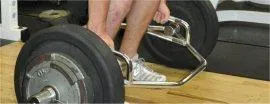
High School Strength Coach Certification
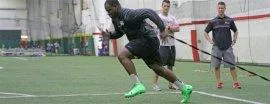
Certified Speed & Agility Specialist
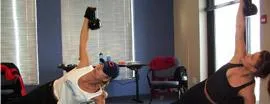
Kettlebell Instructor Course
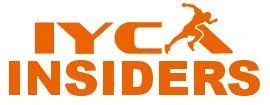
IYCA Insiders - Exclusive Access

Youth Fitness Specialist Certification
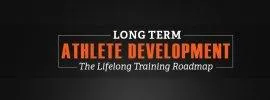
Long Term Athlete Development

Youth Nutrition Specialist Certification

Copyright © 2008 - 2025 International Youth Coaching Association. All Rights Reserved
|
|

